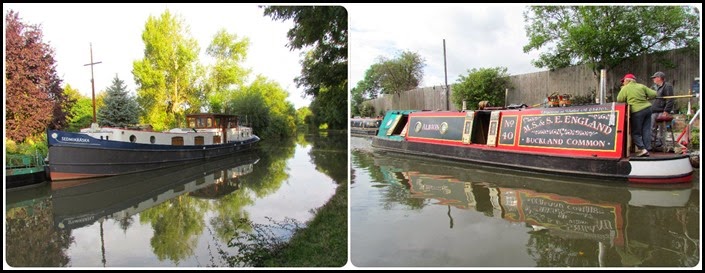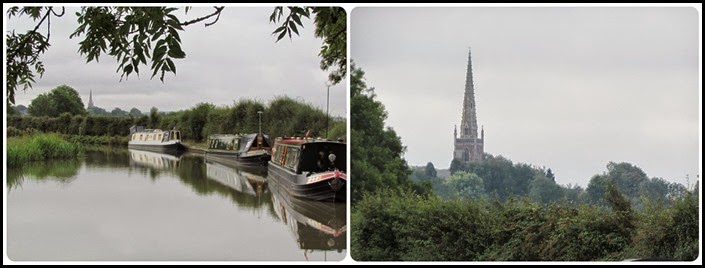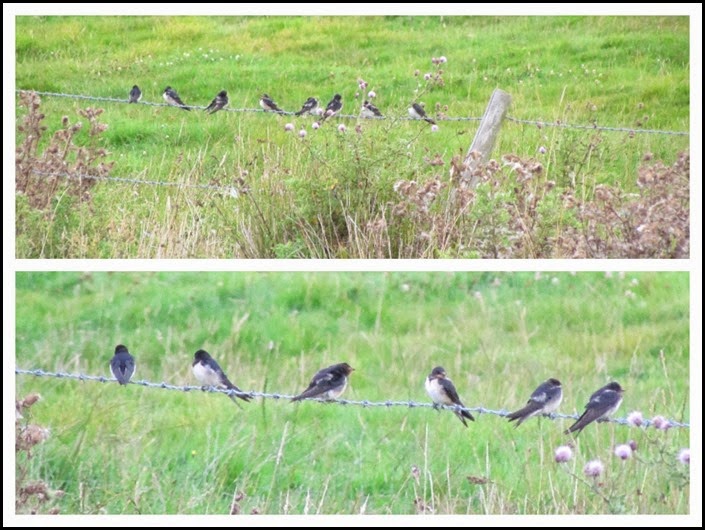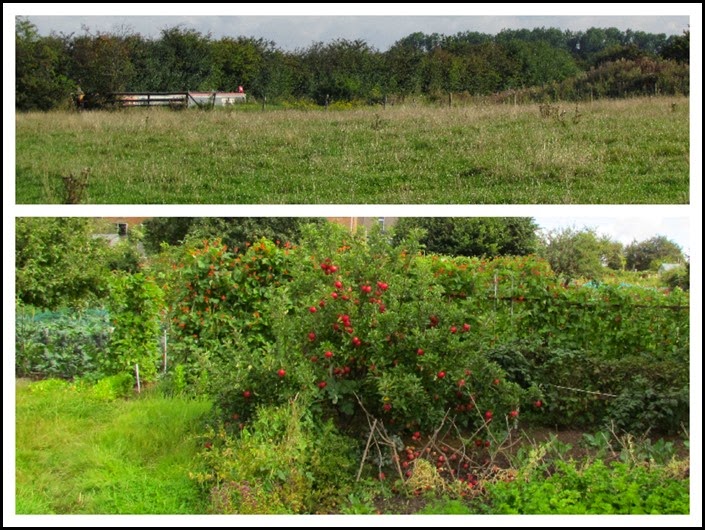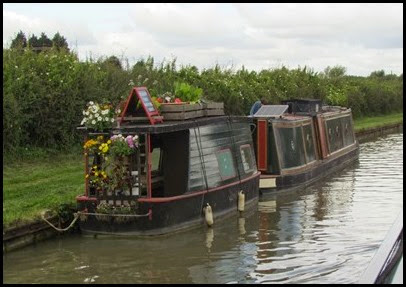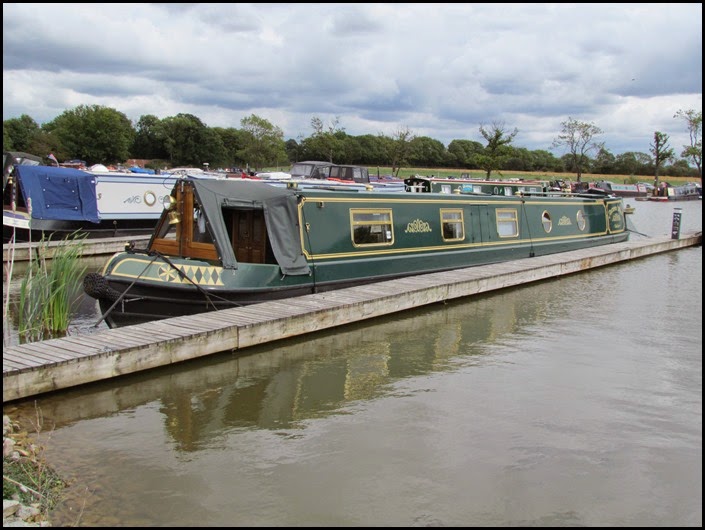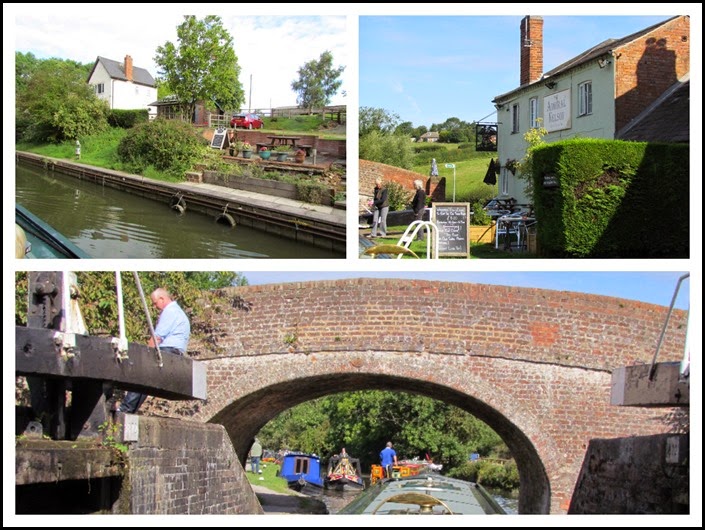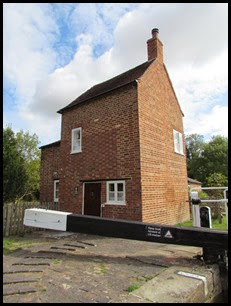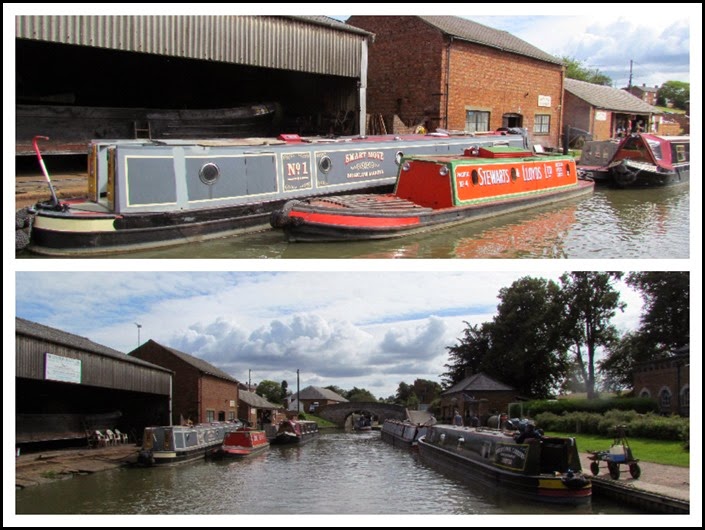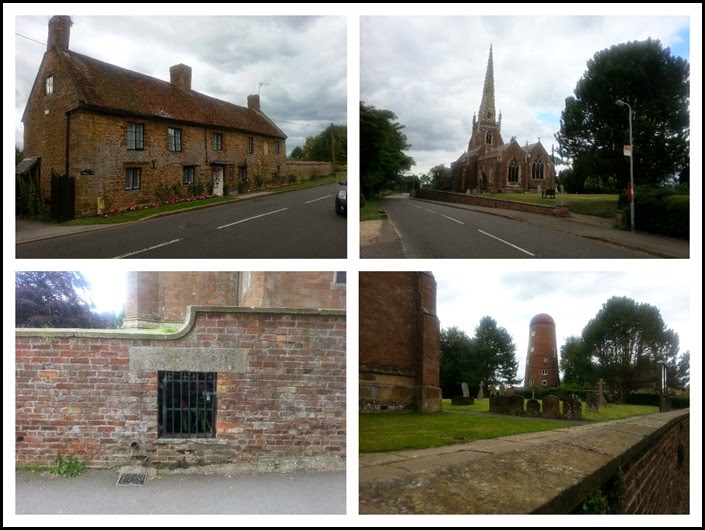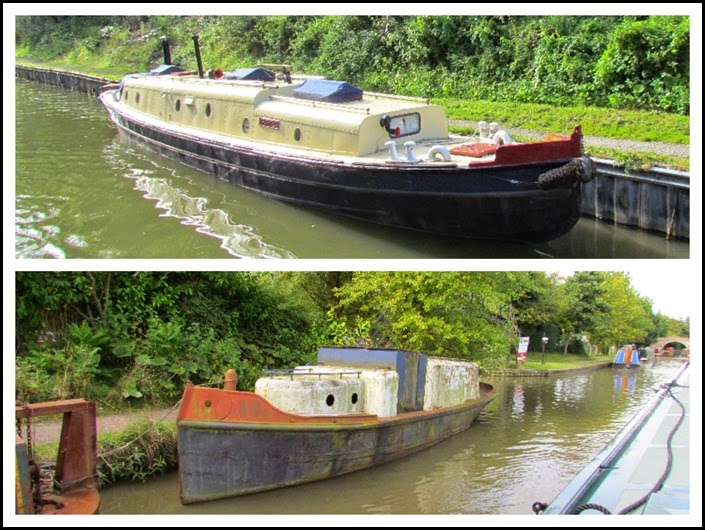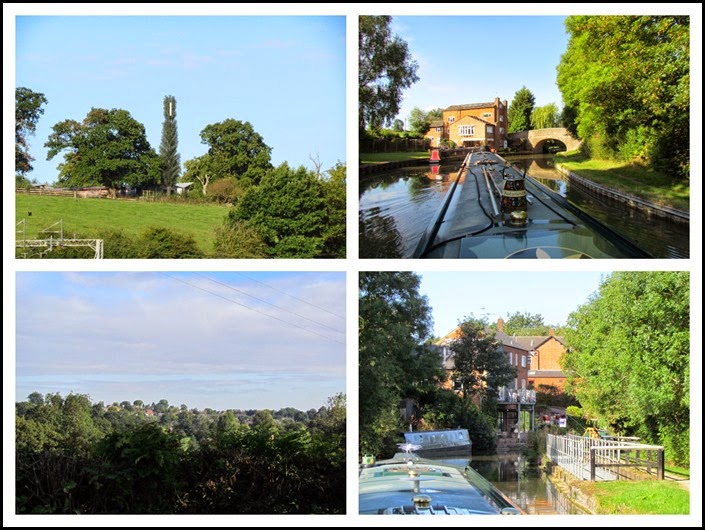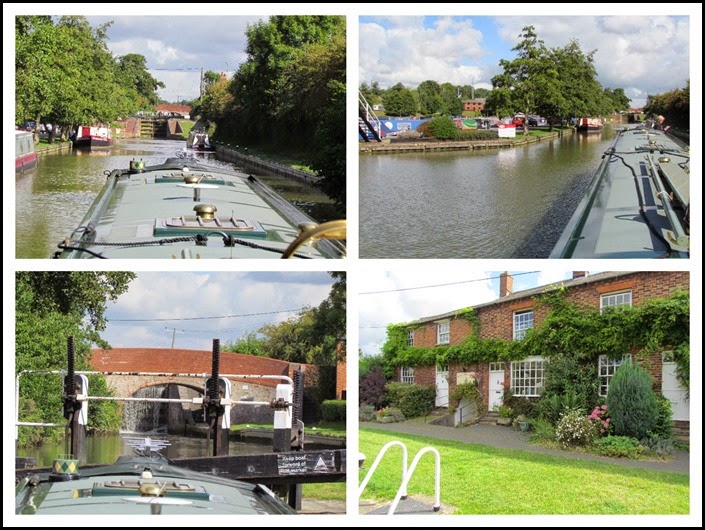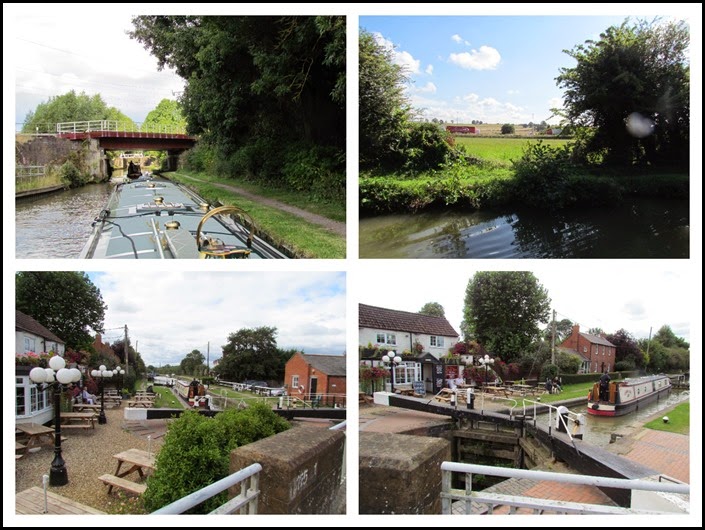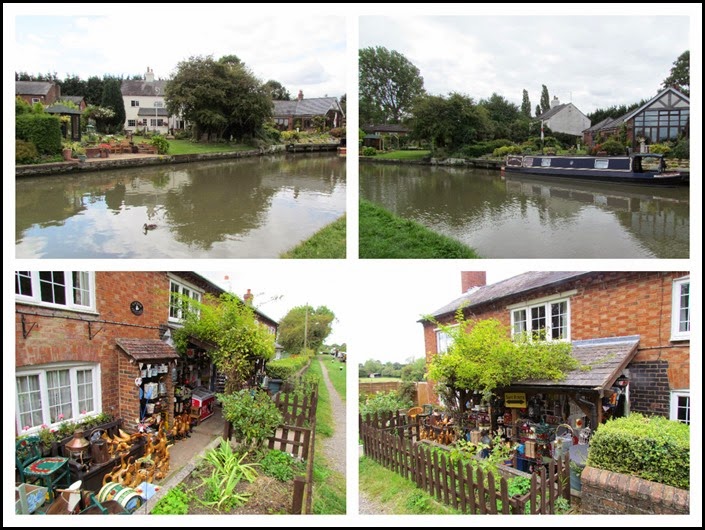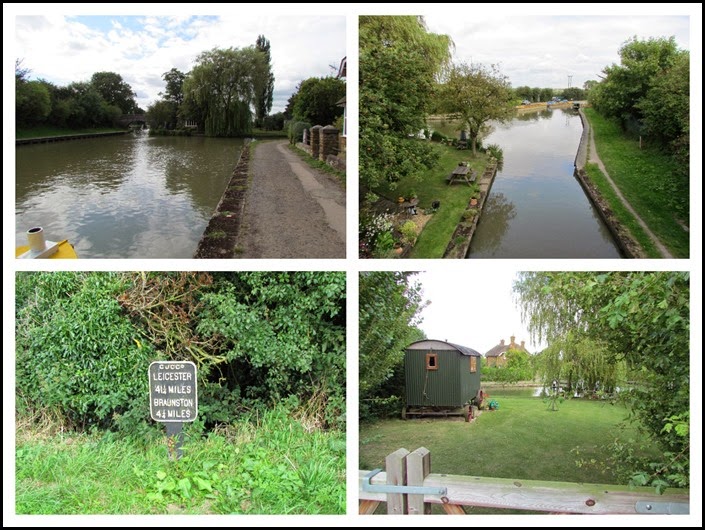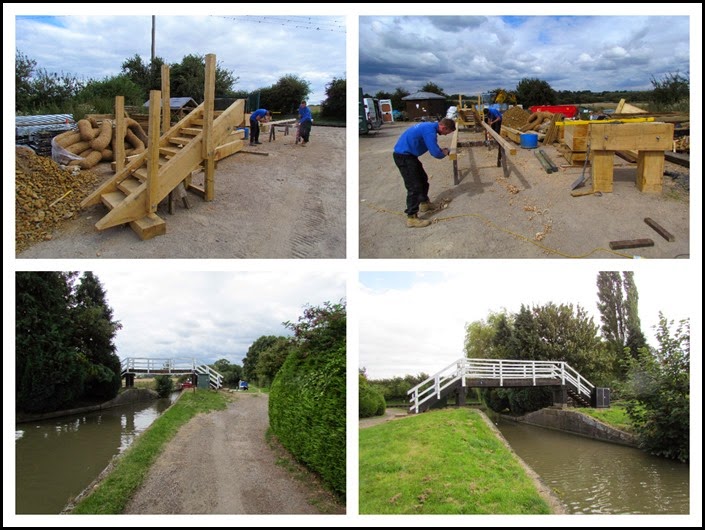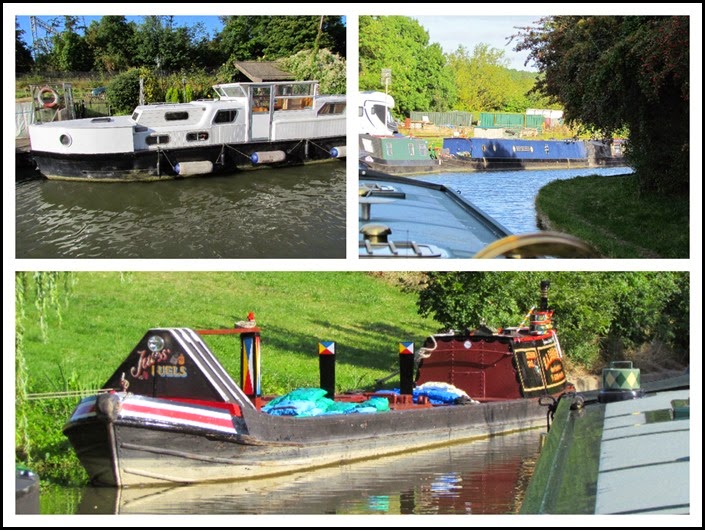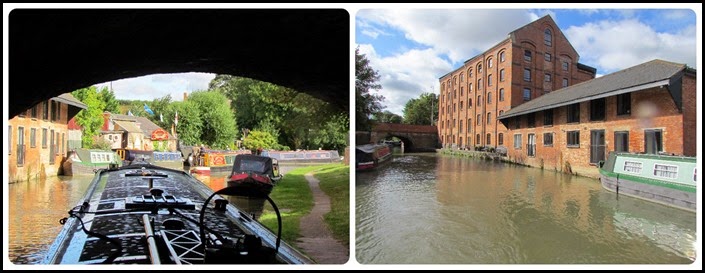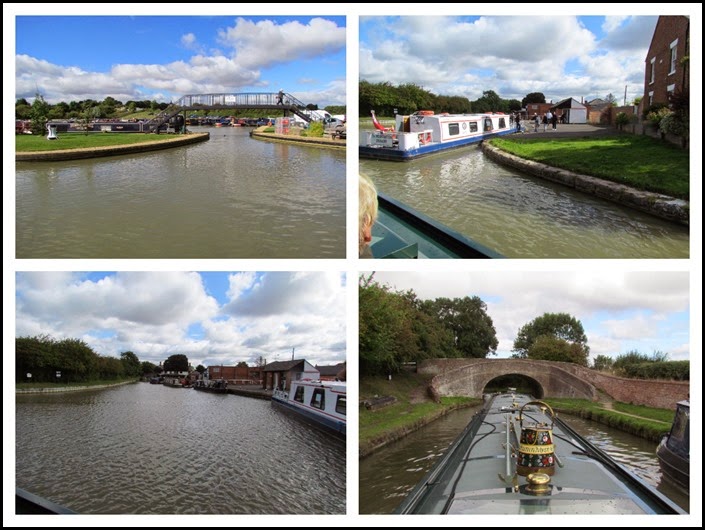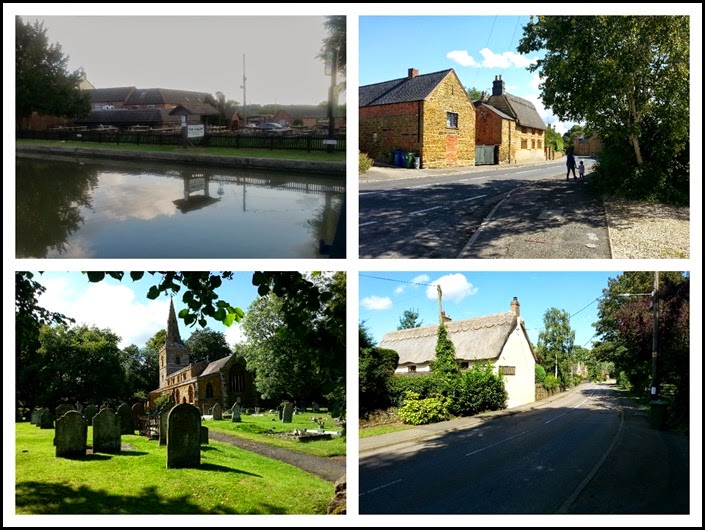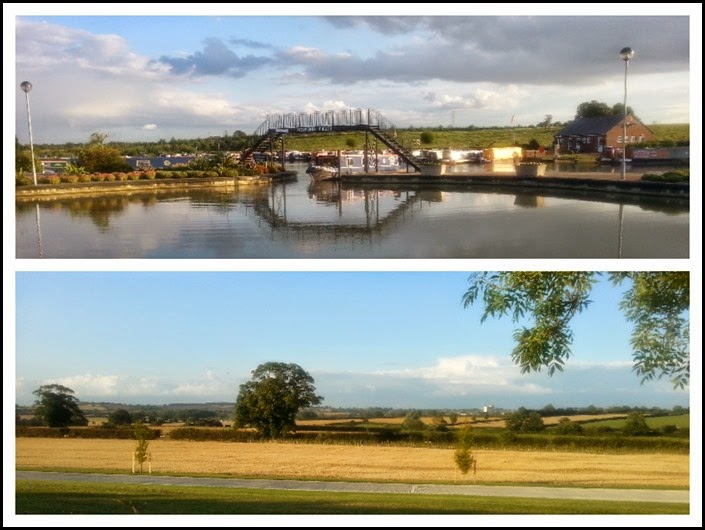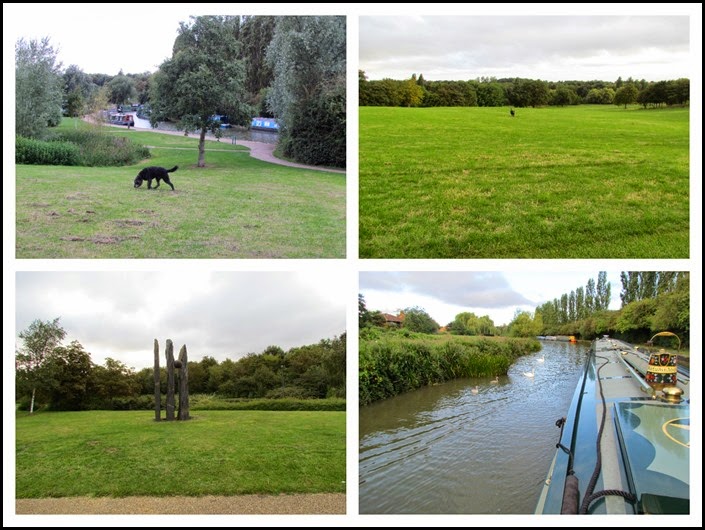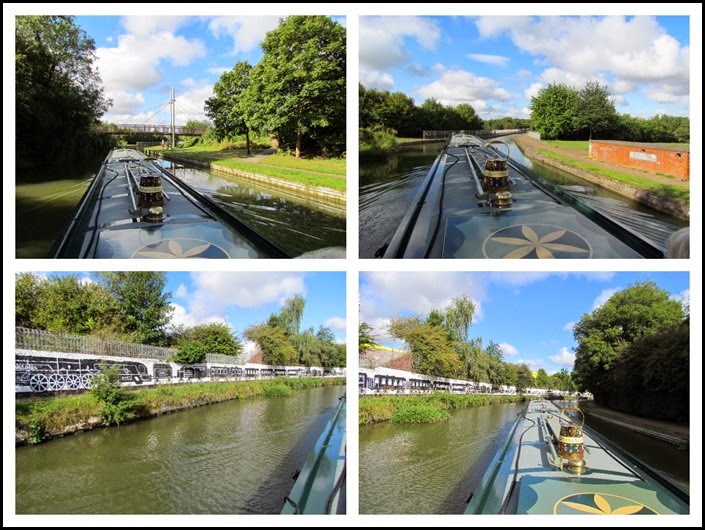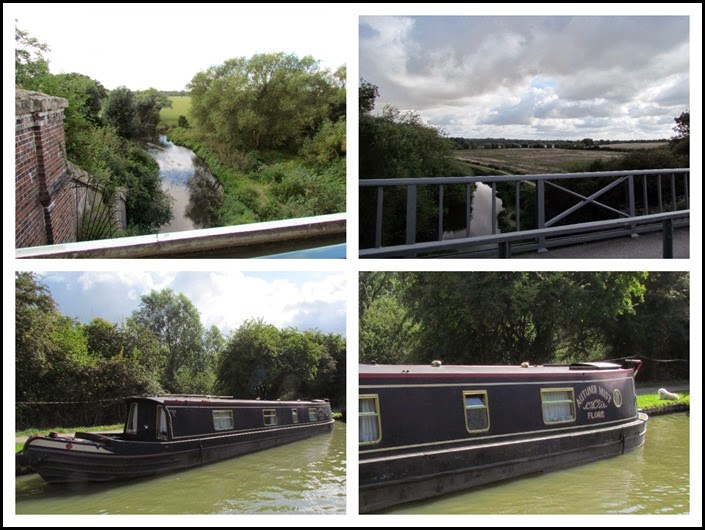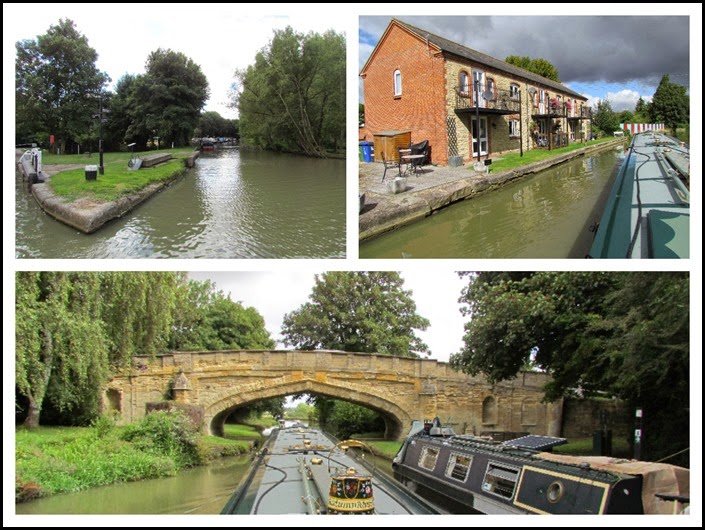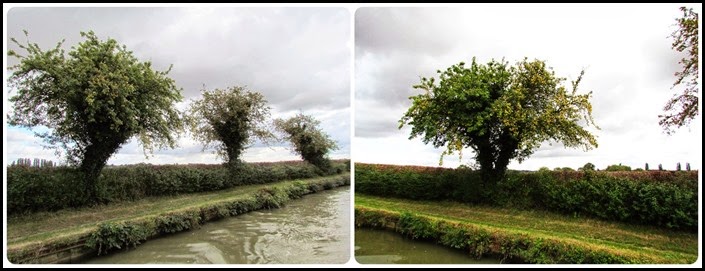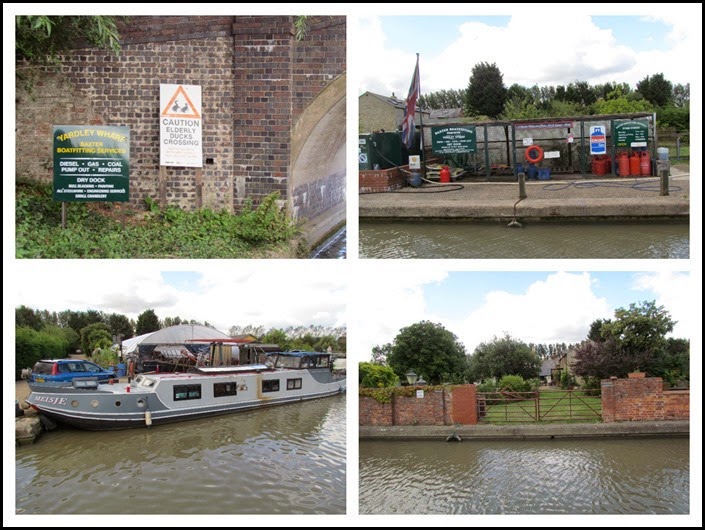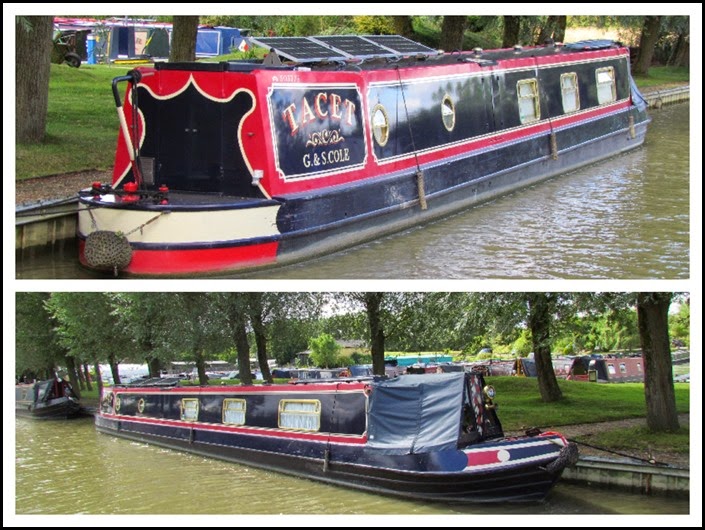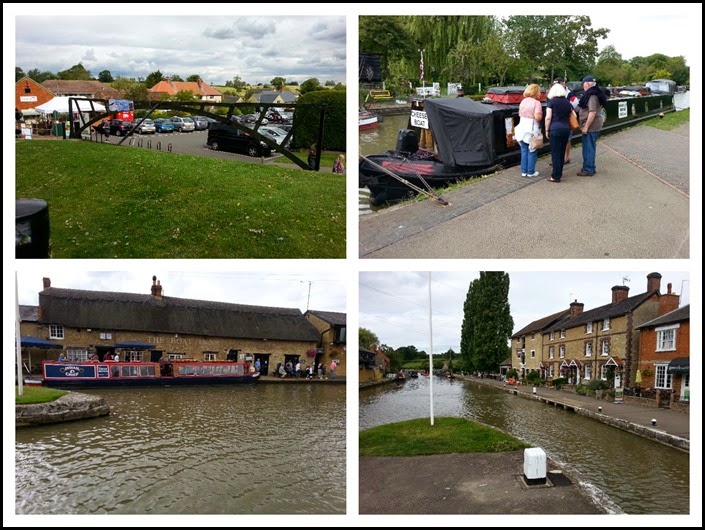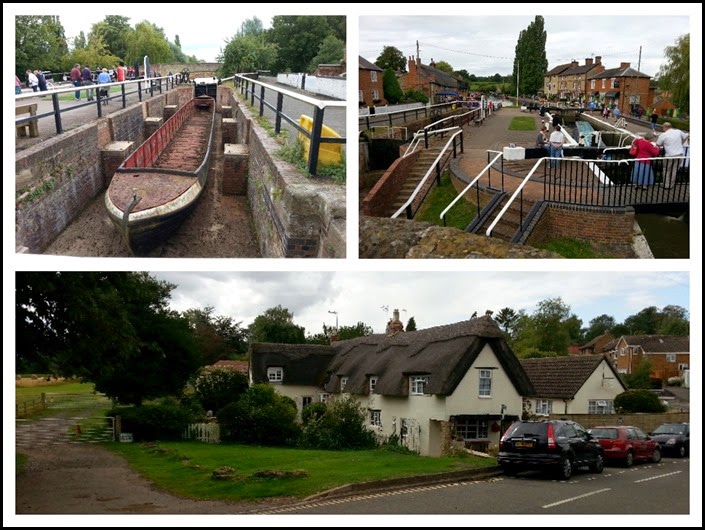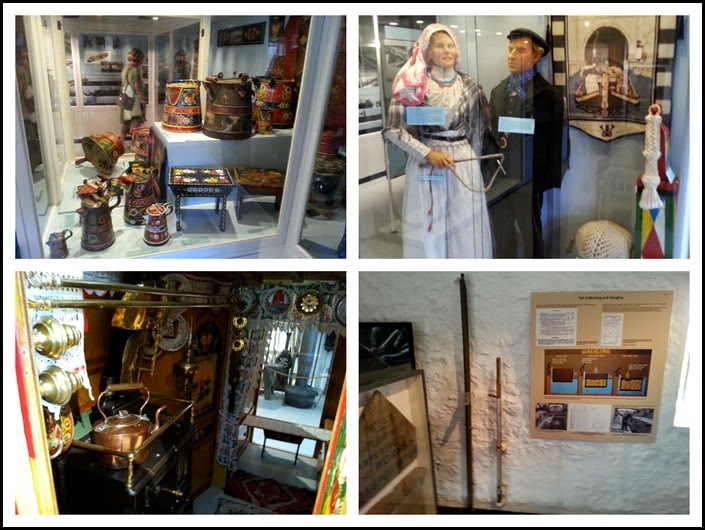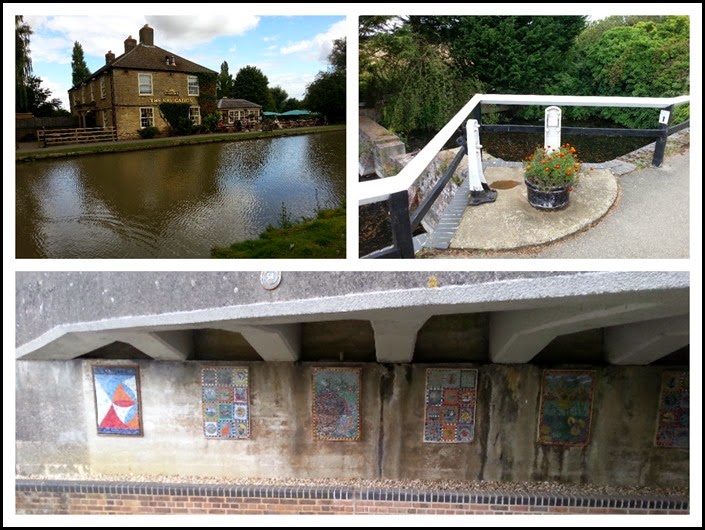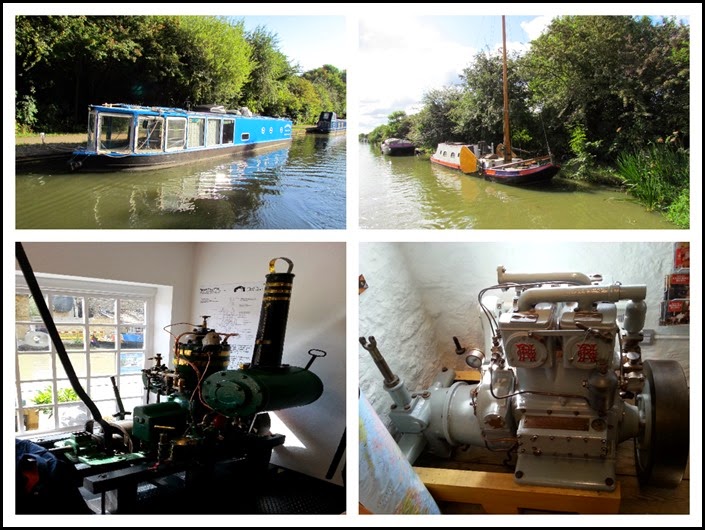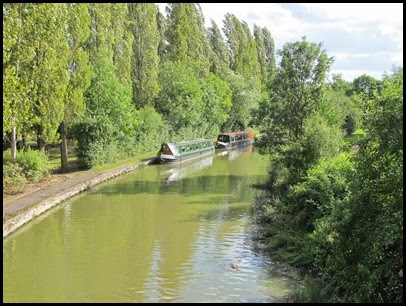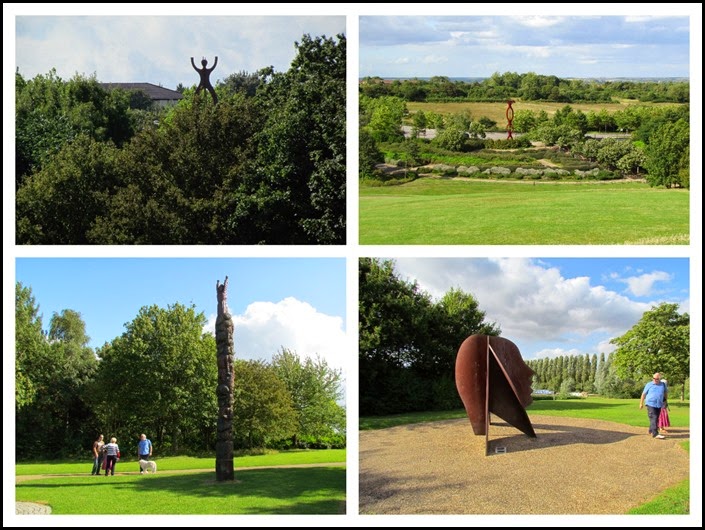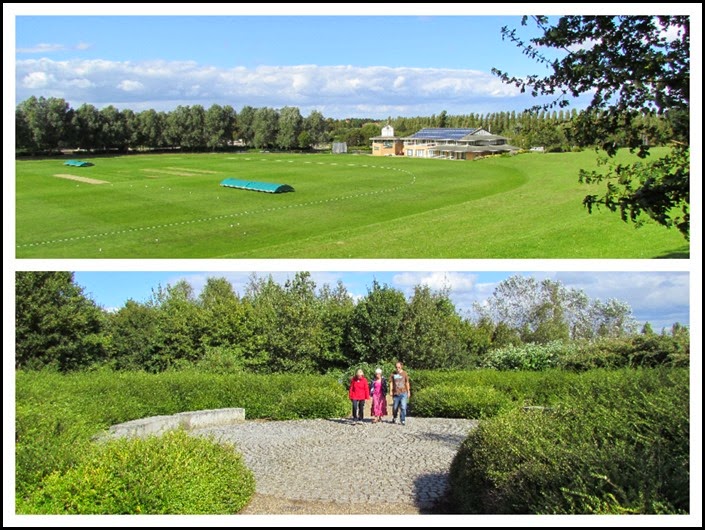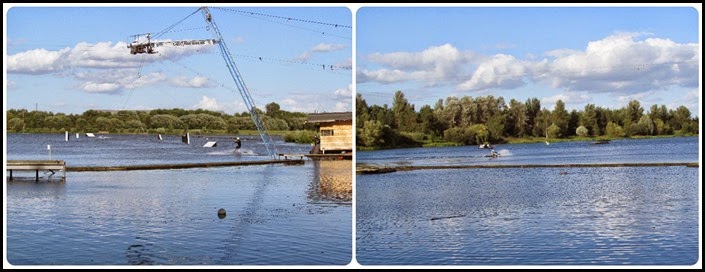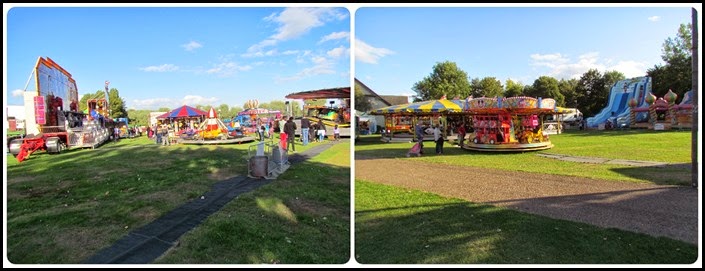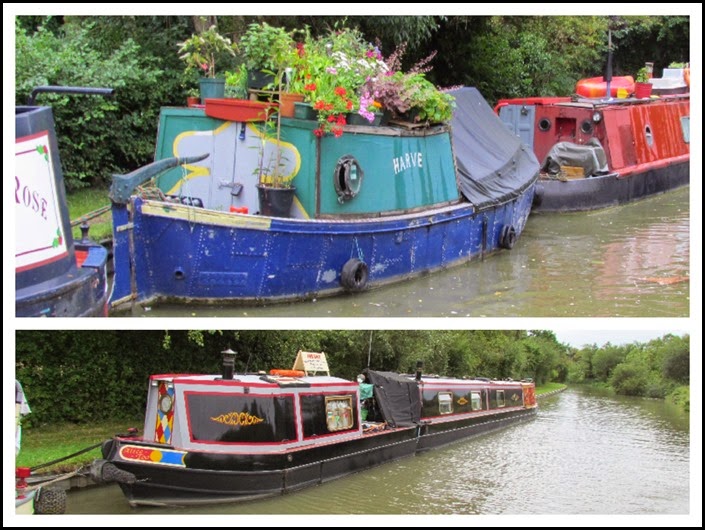This morning we left Stoke Hammond with its double arched bridge which used to be for the second of the paired locks, sadly no more, and on to Fenny Stratford lock which has a swing bridge across the middle. You must make sure that you swing this aside before entering the lock or you could be in for a nasty surprise.
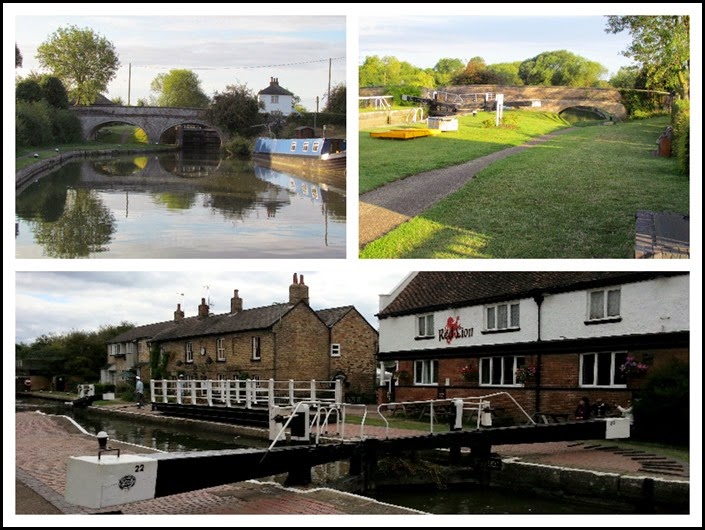
Luck was with us again, a boat had just left a mooring on the 24hr visitor moorings and with a little bit of manouvering and moving a rowing boat which looked as though it had been there for a lot longer than 24hrs, we got both boats in. After coffee we made our way the 25 minute walk to Bletchley Park. As we walked down Bletchley Shopping road there was a band playing in the Band Stand and the street was full of hubbub.
The arrival of ‘Captain Ridley's Shooting Party’ at the Bletchley Park mansion house in late August 1938 was to set the scene for one of the most remarkable stories of World War Two. They had an air of friends enjoying a relaxed weekend together at a country house. They even brought with them one of the best chefs at the Savoy Hotel to cook their food. But the small group of people who turned up were far from relaxed. They were members of MI6, and the Government Code and Cypher School (GC&CS), a secret team of individuals including a number of scholars turned Codebreakers. Their job; to see whether Bletchley Park would work as a wartime location, well away from London, for intelligence activity by GC&CS as well as elements of MI6.
The GC&CS mission was to crack the Nazi codes and ciphers. The most famous of the cipher systems to be broken at Bletchley Park was the Enigma. There were also a large number of lower-level German systems to break as well as those of Hitler's allies. At the start of the war in September 1939 the codebreakers returned to Bletchey Park to begin their war-winning work in earnest.
We arrived at the Park and had to queue to get our tickets and then picked up our audio visual guide and went to explore the estate. First port of call was the garden and the lake where the operatives would relax when off duty. Across the lake we could see the old huts and brick built buildings.
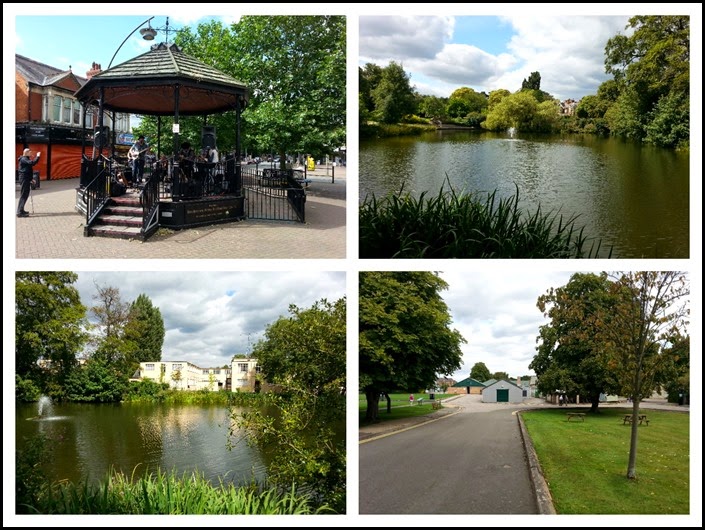
At the far end of the garden is the mansion a very impressive looking building with a magnificent ballroom ceiling.
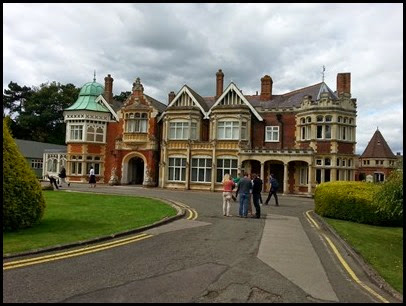
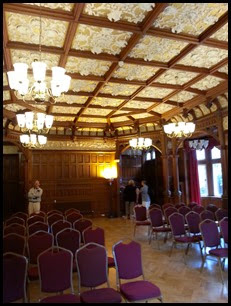
Behind the mansion are the Holley-Cornelius Toy Collection, Leighton Buzzard Model Boat Club, Bletchley Park Post Office all of which give an insight into the past. Trouble is that we remembered making toys out of match boxes, tanks out of cotton reels, and corking. The ambulance and sports car have both been donated by Mick Jagger after appearing in the film Enigma which was produced by his company.
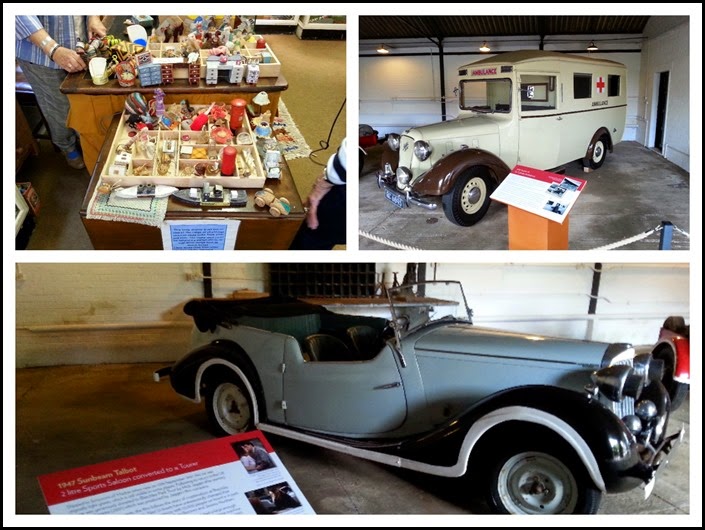
There is one room which helps to explain the importance of homing pigeons to the code breaking activity and this picture shows how they were parachuted into enemy territory so they could fly back with vital information.
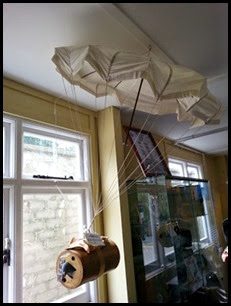
The Poles had broken Enigma in 1932, when the encoding machine was undergoing trials with the German Army. But when the Poles broke Enigma, the cipher altered only once every few months. With the advent of war, it changed at least once a day, giving 159 million million million possible settings to choose from. The Poles decided to inform the British in July 1939 once they needed help to break Enigma and with invasion of Poland imminent..
As more and more people arrived to join the codebreaking operations, the various sections began to move into large pre-fabricated wooden huts set up on the lawns of the Park. For security reasons, the various sections were known only by their hut numbers.
The first operational break into Enigma came around the 23 January 1940, when the team working under Dilly Knox, with the mathematicians John Jeffreys, Peter Twinn and Alan Turing, unravelled the German Army administrative key that became known at Bletchley Park as ‘The Green’.
The museum houses the largest and most comprehensive public display of Enigma machines in the world and the only fully-operational Bombe rebuild - the electro-mechanical device used to mechanise the process of breaking Enigma. The originals were all broken apart by the operators as they left after the war and nothing was saved for future generations.

We had a very nice lunch in Hut 4 and feeling rather tired walked back to the boat for a late afternoon tea and cakes. Fortunately the entrance fee covers us for a years worth of visits so we will be able to go back and explore some of the areas we were not able to cover today.
A couple of the interesting boats we spotted today, this Dutch barge and Nb. Albion
